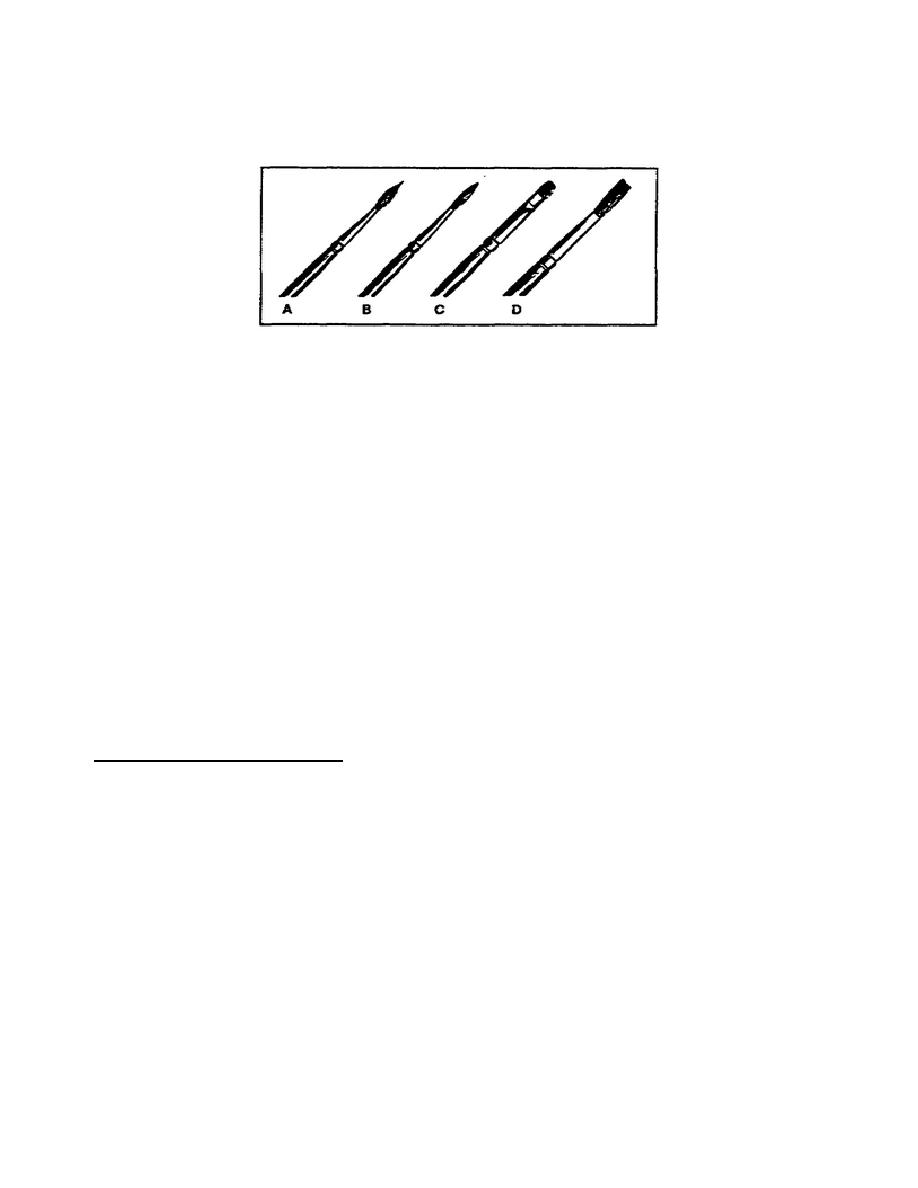
you may use the brush. To use this brush to produce Gothic lettering, it
must have a blunt, round point (brush B) and you must apply even pressure
while lettering.
If the round brush has a sharp tip (brush A) and you
vary the pressure, you can create cursive lettering.
Figure 2-9.
Lettering brushes
When using the round brush to produce lettering, you can control the size
of the line by controlling the amount of pressure applied on the brush.
The more pressure you apply, the wider or broader the lines; conversely,
the less pressure you apply, the thinner the lines. A high quality round
brush presents a fullness of the hairs when wet, whereas a poor quality
brush looks concave at the sides and ragged.
b. Bright Brush (brush C). This brush has hairs that are 1 1/2 times
longer than their width and are flat with sharp corners. Use this type of
brush to letter show cards, posters, and small signs.
c. Flat Brush (brush D). This brush has hairs 2 1/2 times longer than
their width, square corners, and a flat ferrule. The long hairs of this
brush allow for smoother application of the paint when making curves and
long strokes.
This brush also holds more paint than a bright brush;
therefore, you can cover more area before resupplying the brush with
paint.
9.
Brush Quality and Shape.
The finest bristles for brushes are red sable. This is the hair from the
tail of the Siberian mink, also called the Red Tartar Martin.
No other
hair or man-made fiber has the springiness or durability of this hair. It
is delicately tapered, the tip is slender and comes to a fine point. It
is thicker in the middle (the belly) and tapers again toward the root.
The best brushes are shaped like brush B in figure 2-9.
Brushes shaped
like brush A in figure 2-9 are inferior.
a. There are several other types of brush hair that are suitable for
lettering, most are known as "camel's hair." In
2-10
SS0525



 Previous Page
Previous Page
